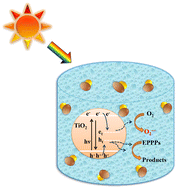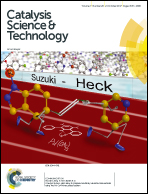Photocatalytic pathway toward degradation of environmental pharmaceutical pollutants: structure, kinetics and mechanism approach
Abstract
During the last few years, the presence of pharmaceuticals in the aquatic environment, classified as so-called emerging contaminants, has attracted attention from the scientific community. Based on uptake mechanism and route administration of pharmaceuticals, they are expelled as a mixture of metabolites, neutral substance, or conjugated complex with an inactivating compound attached to the molecule. After usage, the expelled by-products are usually only partially metabolized and end up in the wastewater treatment plants. Large amounts of these substances are not destroyed by traditional sewage and wastewater treatment plants, thus eventually getting released into the environment. Their environmental existence has gained attention worldwide owing to related abnormal physiological processes in species reproduction, spurt incidences of cancer, enhancement of antibiotic-resistant bacteria and potential increment of hazardous chemical mixtures. Pharmaceutical pollution in the environment exists as a major issue for humans as well as the environment. These types of pollutants have been discovered in areas of low human population, such as the Antarctic. Although their influence, on both human health and the environment, is barely discernible, behavioral and physiological effects have already been detected in a number of species. In addition, there are several verified unfavorable impacts on human health such as presence of endocrine disruptors in low concentrations in the environment. Environmental pollution by pharmaceutical waste needs to be controlled through the quality use of medicines and quality sewage treatment. Through appropriate use of pharmaceuticals and suitable sewage systems, the environmental impact of pharmaceuticals may be reduced, without affecting the health danger gained through the intake of these medicines. Therefore, photocatalytic degradation of pharmaceutical pollution is a suitable method that should be reviewed and studied.



 Please wait while we load your content...
Please wait while we load your content...